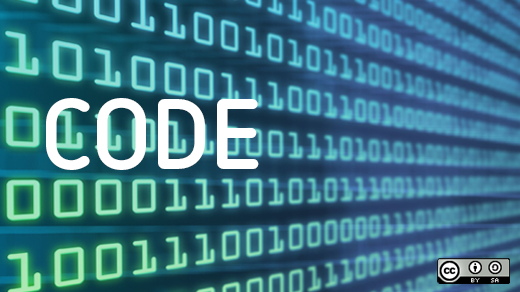Newcomers to python-ideas occasionally make reference to the idea of "Python 4000" when proposing backwards incompatible changes that don't offer a clear migration path from currently legal Python 3 code. After all, we allowed that kind of change for Python 3.0, so why wouldn't we allow it for Python 4.0?
I've heard that question enough times now (including the more concerned phrasing "You made a big backwards compatibility break once, how do I know you won't do it again?"), that I figured I'd record my answer here, so I'd be able to refer people back to it in the future.
What are the current expectations for Python 4.0?
My current expectation is that Python 4.0 will merely be "the release that comes after Python 3.9". That's it. No profound changes to the language, no major backwards compatibility breaks - going from Python 3.9 to 4.0 should be as uneventful as going from Python 3.3 to 3.4 (or from 2.6 to 2.7). I even expect the stable Application Binary Interface (as first defined in PEP 384) to be preserved across the boundary.
At the current rate of language feature releases (roughly every 18 months), that means we would likely see Python 4.0 some time in 2023, rather than seeing Python 3.10.
So how will Python continue to evolve?
First and foremost, nothing has changed about the Python Enhancement Proposal process - backwards compatible changes are still proposed all the time, with new modules (like asyncio) and language features (like yield from) being added to enhance the capabilities available to Python applications. As time goes by, Python 3 will continue to pull further ahead of Python 2 in terms of the capabilities it offers by default, even if Python 2 users have access to equivalent capabilities through third party modules or backports from Python 3.
Competing interpreter implementations and extensions will also continue to explore different ways of enhancing Python, including PyPy's exploration of JIT-compiler generation and software transactional memory, and the scientific and data analysis community's exploration of array oriented programming that takes full advantage of the vectorisation capabilities offered by modern CPUs and GPUs. Integration with other virtual machine runtimes (like the JVM and CLR) is also expected to improve with time, especially as the inroads Python is making in the education sector are likely to make it ever more popular as an embedded scripting language in larger applications running in those environments.
For backwards incompatible changes, PEP 387 provides a reasonable overview of the approach that was used for years in the Python 2 series, and still applies today: if a feature is identified as being excessively problematic, then it may be deprecated and eventually removed.
However, a number of other changes have been made to the development and release process that make it less likely that such deprecations will be needed within the Python 3 series:
- the greater emphasis on the Python Package Index, as indicated by the collaboration between the CPython core development team and the Python Packaging Authority, as well as the bundling of the
pipinstaller with Python 3.4+, reduces the pressure to add modules to the standard library before they're sufficiently stable to accommodate the relatively slow language update cycle - the "provisional API" concept (introduced in PEP 411) makes it possible to apply a "settling in" period to libraries and APIs that are judged likely to benefit from broader feedback before offering the standard backwards compatibility guarantees
- a lot of accumulated legacy behaviour really was cleared out in the Python 3 transition, and the requirements for new additions to Python and the standard library are much stricter now than they were in the Python 1.x and Python 2.x days
- the widespread development of "single source" Python 2/3 libraries and frameworks strongly encourages the use of "documented deprecation" in Python 3, even when features are replaced with newer, preferred, alternatives. In these cases, a deprecation notice is placed in the documentation, suggesting the approach that is preferred for new code, but no programmatic deprecation warning is added. This allows existing code, including code supporting both Python 2 and Python 3, to be left unchanged (at the expense of new users potentially having slightly more to learn when tasked with maintaining existing code bases).
From (mostly) English to all written languages
It's also worth noting that Python 3 wasn't expected to be as disruptive as it turned out to be. Of all the backwards incompatible changes in Python 3, many of the serious barriers to migration can be laid at the feet of one little bullet point in PEP 3100:
- Make all strings be Unicode, and have a separate bytes() type. The new string type will be called 'str'.
PEP 3100 was the home for Python 3 changes that were considered sufficiently non-controversial that no separate PEP was considered necessary. The reason this particular change was considered non-controversial was because our experience with Python 2 had shown that the authors of web and GUI frameworks were right: dealing sensibly with Unicode as an application developer means ensuring all text data is converted from binary as close to the system boundary as possible, manipulated as text, and then converted back to binary for output purposes.
Unfortunately, Python 2 doesn't encourage developers to write programs that way - it blurs the boundaries between binary data and text extensively, and makes it difficult for developers to keep the two separate in their heads, let alone in their code. So web and GUI framework authors have to tell their Python 2 users "always use Unicode text. If you don't, you may suffer from obscure and hard to track down bugs when dealing with Unicode input".
Python 3 is different: it imposes a much greater separation between the "binary domain" and the "text domain", making it easier to write normal application code, while making it a bit harder to write code that works with system boundaries where the distinction between binary and text data can be substantially less clear. I've written in more detail elsewhere regarding what actually changed in the text model between Python 2 and Python 3.
This revolution in Python's Unicode support is taking place against a larger background migration of computational text manipulation from the English-only ASCII (officially defined in 1963), through the complexity of the "binary data + encoding declaration" model (including the C/POSIX locale and Windows code page systems introduced in the late 1980's) and the initial 16-bit only version of the Unicode standard (released in 1991) to the relatively comprehensive modern Unicode code point system (first defined in 1996, with new major updates released every few years).
Why mention this point? Because this switch to "Unicode by default" is the most disruptive of the backwards incompatible changes in Python 3 and unlike the others (which were more language specific), it is one small part of a much larger industry wide change in how text data is represented and manipulated. With the language specific issues cleared out by the Python 3 transition, a much higher barrier to entry for new language features compared to the early days of Python and no other industry wide migrations on the scale of switching from "binary data with an encoding" to Unicode for text modelling currently in progress, I can't see any kind of change coming up that would require a Python 3 style backwards compatibility break and parallel support period. Instead, I expect we'll be able to accommodate any future language evolution within the normal change management processes, and any proposal that can't be handled that way will just get rejected as imposing an unacceptably high cost on the community and the core development team.
Originally published on Curious Efficiency and also available at the Red Hat Developer Blog. Republished under Creative Commons. For more on the evolution of Python, you might be interested in The transition to multilingual programming with Python, also by Nick Coghlan.







13 Comments